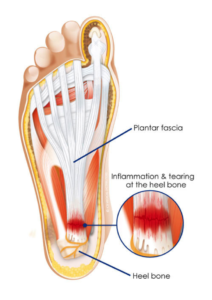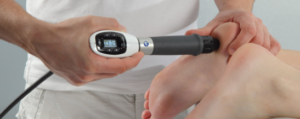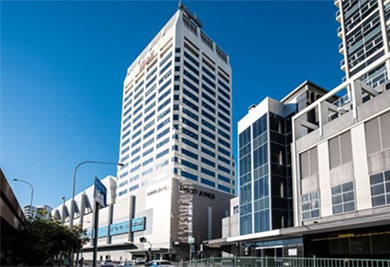Plantar Fasciitis

What is it?
The Plantar Fasciia is a tough piece of connective tissue that lives on the bottom of your foot. It connects the calcaneus (heel bone) to the metatarsals (ball of the foot) and the tip of your toes. Plantar Fasciitis is when this connective tissue gets inflamed, which is always due to excess load.
The plantar fascia (along with other structures) is responsible for your foots arch, which then gives your feet the structural support we need to walk. If our feet aren’t working properly or in correct biomechanical alignment, the connective tissues need to do more work and results in excess forces and you guessed in – too much load!
Plantar fasciitis is the most common foot condition, accounting for up to 15% of foot complaints that require health professional intervention. What important to note is that figure doesn’t include those who don’t seek help, or just think heel pain is normal.
Why do my feet hurt?
As we have already established; excess load! Now in the case of plantar fasciitis there is rarely one single causative factor, its much more likely to be multifactorial. Examples of factors that influence the onset are:
- Weight gain
- Physical activity
- Age
- Pregnancy
- Prolonged periods of standing or sitting
- Footwear
- Poor biomechanics
Of these, poor biomechanics (the study of structure and function of the body) is a particular area of influence on the plantar fascia. Chronically pronated or “flat feet” are a common denominator amongst this demographic. Poor biomechanics are complicated by the effect of footwear: flimsy shoes (such as ballet flats or flip flops) and even expensive running shoes may not be suited for your feet.
How do you cure it?
There are a plethora of treatment options available, all with different levels of evidence behind them, but lets briefly talk about a few of the common treatments:
Night splints hold the ankle in a bent position and work on the premise that the problem lies with the calves and plantar fasciia being short, and that stretching these will minimise the its chance of tearing when loaded. If your issue is indeed a short plantar fascia you may feel some relief with these splints, but unfortunately they may be short lived as the newly stretched ligament can create feet that are unable to support themselves during loading.
Cryo/Thermotherapy is used for the symptomatic relief of inflamed soft tissue. Cryo (cold) therapy works around the concept of reducing swelling, and Thermo (heat) therapy tries to encourage blood flow, and both have pro’s and con’s and the appropriate treatment depends on whether your injury is chronic (long term) and acute (recent injury).
Massage needs no description; sore feet? Massage them! You would be hard-pressed to find anyone who hasn’t felt immediate relief after a massage, and when you combine it with cryotherapy (iced bottle rolling) the immediate effects may be even greater. But again, you are more likely to find yourself on the ‘my-feet-are-still-sore’ side of the fence.
Surgical treatments for plantar fasciitis vary amongst surgeons, and the techniques they use. For this reason I wont talk about any particular procedure, but rather identify that there is typically a significant financial impact (due to periods of non-weight bearing and depending on your job, inability to work), the risk of infection and the risk of reduction of foot function. In saying this, if your in the 10% of the population who does not respond to conservative treatments, surgery is a viable option.
At Podiatry First, we specialise in the treatment of soft tissue injuries, and we are experts in the use of Shockwave Therapy
What is Shockwave Therapy? And more importantly, HOW does it help YOUR Plantar Fasciitis?

Extracorporeal Shockwave Therapy (EST) is a highly researched and evidence backed therapy for the treatment of soft tissue and bony injuries. During the treatment, an applicator is applied to the painful area and an acoustic wave carries energy into the affected tissues. This energy interacts with the tissue causing accelerated tissue repair and cell growth, localised analgesia, and mobility restoration; all things that need to be addressed in Plantar Fasciitis!
So, if you or someone you know is living with foot pain, come drop into Podiatry First. We can identify the causative/contributing factors to your pain, and we can work on them together and establish a rehabilitation program personalised to you. Thank you for reading!
Leave a reply




Most Commented